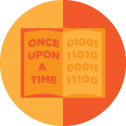
Plus Ça Change
James Wright, College of Sciences
The leading conceit of intellectuals of every age is that we stand, even now, on the edge of the great transformation. From Aristotle to Alvin Toffler, the path of intellectual prognostication is littered with arrogant predictions – most of them false starts, bad guesses or plain wishful thinking.
Futurists frequently have an unreasoning faith in human progress – not only will the future be different, it will also be better. Thus, the information technology revolution is expected to democratize access to information and in the process transform politics – but it won’t. And alternative renewable energy resources are said to be ushering in a new economic era – but they aren’t. Our politics are driven by bigotry and fear – smartphones don’t change that. And economics is driven by greed – renewable energy resources are just another market opportunity for global capitalism.
On the social side, the past few decades have witnessed increasing poverty and inequality, a general worsening of the homelessness problem, a resurgence of racial intolerance, new hostilities directed toward our growing immigrant population, and related lamentable trends. My prediction is that if we could fast-forward 50 years and have a look around, we’d be as disturbed by what we saw as we are today.

Future Robots: C-3POs or Workhorse Machines?
Florian Jentsch, College of Sciences
When hearing the word “robot,” most people conjure up something roughly humanlike in form and size, extremely strong or smart, but lacking emotion.
The reality is that it would be extremely difficult and costly to build a humanlike all-purpose robot that even approximates the flexibility, adaptability and vast range of physical, perceptual and mental capabilities that define us as uniquely human.
Instead, most practical robots will continue to be designed for specific functions and tasks defined largely by the three D’s: dull, dirty or dangerous. None of these are particularly suited for the human form or size, even if we expand our focus to social and entertainment functions.
So, the next time you imagine the appearance of most future robots, don’t think of C-3PO or the T-1000 from “Terminator 2: Judgment Day.” Instead, think of evolutions from existing tools, or maybe of machine incarnations of working animals: smart enough to survive most of the time, but without constant human help; quite capable for a specialized task or environment; and ranging widely in size and form, but, ultimately, not much looking like humans.


The Future of News is in Your Hands
Rick Brunson, ’84, College of Sciences
Almost half of Americans own a smartphone, and 62 percent of them say that’s where they get their news on a weekly basis, according to the Pew Research Center for the People & the Press.
Standing in line or sitting in a drive-thru, Americans are gobbling up news on their iPhones and Androids, keeping up with what’s going on in the world and in their communities. Look for that trend to only continue to explode.
Americans aren’t just passively consuming news. They’re interacting with it, commenting on it, and sharing it with family and friends through social networks like Facebook. When a big news story breaks – an election or a mass shooting – they become “two-screeners,’’ watching the story unfold on TV and reacting to it through their phone and tablet apps.
Indeed, thanks to smartphones and tablets, people are spending more time with the news than ever before – an average of 70 minutes a day.
Technology is enabling the dream of the Founding Fathers who wrote the First Amendment, envisioning a democracy brimming with news, debate and civic engagement.
James Madison, meet Steve Jobs.

Amateur Historians Benefit from Digitization
Scott Waring, College of Education and Human Performance
The future is rife with opportunities for amateur historians, most importantly K–16 students. In the past, professional and novice historians alike had to travel great distances to conduct even the most rudimentary research. With the ubiquitous nature of the Internet and digital primary source repositories, one can access sources, data and information from just about anywhere.
For example, the Library of Congress, the largest library in the world, has more than 155.3 million items on approximately 838 miles of bookshelves. Luckily, the library, through increased digitization efforts, has more than 38 million digitized items available through its website, with the number increasing daily. Add to this the multitude of sites focusing on digitizing the past and allowing individuals to conduct genealogical research.
As a result, today’s students have unique opportunities not afforded in the past by even the most tenacious historians. No longer must the average history student rely strictly on lectures and district-approved textbooks.


The Instructional Coach is the New Catch-All Coach
Cherie Behrens, College of Education and Human Performance
Florida is embracing instructional coaches in lieu of literacy and content area coaches. As a result, there has been an increase of instructional coach positions across the state. By offering the new and only state-approved K–12 instructional coaching course, the College of Education and Human Performance is spearheading efforts to teach educators how to become impactful instructional coaches.
Districts and schools need coaches who can work with all teachers in promoting student learning in the age of Common Core State Standards. Thus, educational leaders are seeking to hire coaches who have more than one area of expertise to enrich the teaching practices of diverse educators and bridge cross-curricular collaborations in efforts to increase student learning.
An instructional coach has a broader and deeper background than other specialized coaches to more effectively support the varied teachers that make up a district or school site. As a result, instructional coaches will have beyond just literacy or content-specific credentials. For example, an instructional coach’s background may include literacy credentials along with other expertise (e.g., K–12 ESOL Endorsement, experience teaching in the content areas and/or advanced technology skills).

Profiting from Florida’s Solar Energy
James Fenton, Florida Solar Energy Center
Florida has the capacity to save energy, reduce gasoline consumption and create greater efficiency in our homes, all while being sustainable and profitable. Electricity created from solar power and our local biomass can be used to power plug-in electric vehicles (PEVs), as well as make our homes more economical.
Florida’s renewable energy has been considered too expensive to invest in – this couldn’t be further from the truth. Gasoline is what’s too expensive, even with the introduction of higher gas-mileage conventional vehicles. As the price of gasoline continues to rise, and the price of photovoltaics (PV) drops, the gasoline-equivalent cost of solar electricity is predicted to be 70 cents a gallon in 2021.
The automotive industry has gotten serious about producing effective, efficient electric cars, with more than 40 new PEV models being introduced over the next several years. More than 300,000 PEVs are expected to be on Florida roads, and 14 percent of the state’s electricity will come from unsubsidized rooftop solar at prices less than those of retail utility companies.
With this market potential, one hopes that both automobile and PV manufacturers will set up shop in Florida. Not only will this create jobs in Florida, it will create profits.


Radical Change in Careers for Graduates
Karl Sooder, College of Business Administration
Little focus is placed on a significant and growing issue: the permanent underemployment of our college graduates. According to current economic studies, about 50 percent of graduates in the U.S. are jobless or underemployed at commencement.
Students often have no choice but to move in with their parents. They accept low-paying service work while searching, often in vain, for professional positions. Substantial time and money have been invested in college degrees, but these degrees no longer guarantee paths to high-paying jobs.
In response, students must begin developing their own personal marketing plans. Often, this will take the form of preparing to be an entrepreneur in order to create one’s own brand and company. Graduates are no longer able to assume that corporations, the government or other classic institutions will provide employment.
Beginning in their freshman year, more students will need to create their own job descriptions, tailor their education and then successfully fill those personal entrepreneurial positions.
College graduates can no longer assume anything in today’s job market; self-starters who possess ambition and innovation may now hold the keys to career success.

Virtual Classroom Innovates Teaching
Michael Hynes, College of Education and Human Performance
A UCF research and development effort, TLE TeachLivE™, is showing the world that there is a place for using simulation techniques in education. Currently, teachers are evaluated based on the performance of the children they teach, but just presenting content is not sufficient in today’s classroom. Teaching effectiveness is the new holy grail of K–12 education.
TLE TeachLivE™ is a virtual classroom that allows both prospective and practicing teachers the opportunity to hone their education skills without impacting real students. Case studies have shown that as few as four 10-minute experiences in the TLE TeachLivE™ simulator can make a dramatic difference in how a teacher performs in their classroom.
UCF is leading the effort to make simulation a go-to method for the improvement of education. To date, 22 universities with teacher education programs and two school systems are using the TLE TeachLivE™ system, with nearly 50 more clients requesting to be added. Organizations such as AACTE, Sesame Street, LiveText, ASCD and Google have recognized UCF’s use of the innovative simulator to better education.

